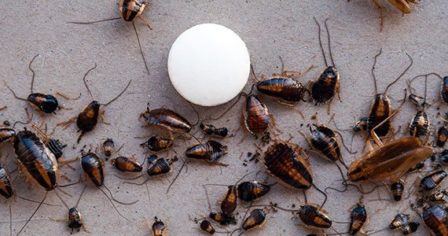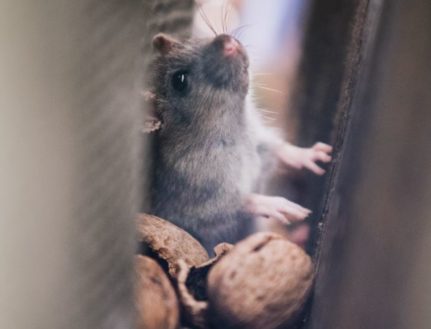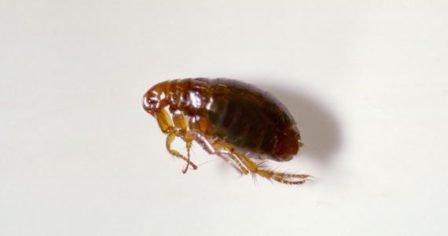Mice. Roaches. Bed bugs. Fleas. Ants. Most of us want nothing to do with them, outside of hiring someone else to get rid of them for us. We’d rather not dwell on crazy pest control facts.
For those of you who have an interest in all things scientific, this post is pretty cool. For those of you who are fairly squeamish about pests around your home, this post may be the stuff of nightmares.
Here are five really crazy, but totally true, facts about pest control.
1. Adult ants cannot consume solid food.
Who would have thought, right? Especially for those of us who have ever had to deal with those little black ants in our kitchen during the spring and summer, you might never have guessed this!
Ants have extremely narrow waist parts (called petioles), that make it impossible for solid food to make it through their digestive systems. Many species of ants simply cannot physically swallow solid food, and digest it. It would kill them.
As a work-around, they have a couple of defenses against this. First, they take solid food to their larvae. The larvae in an ant colony will often apply an enzyme that breaks the solid down into a liquid. Some species regurgitate the solid in a liquid form for the adults to eat. Some have a “pouch” where the adults place the solid food, and the larvae essentially “drool” on the food; the enzymes in their spit breaks down the food. There’s even a species of ant commonly referred to as “Dracula ants” that takes a bite out of their larvae. When the digested food is broken down, the adult Dracula ants lap up the leaking fluid, essentially turning their larvae into a giant “tap,” like a soda fountain for already-digested ant food.
Adult ants also have mouth-parts that essentially act like a strainer or colander. Anything that is too big to digest gets filtered out, and spit out, by the ant.
2. Newly hatched bedbugs can survive for months without feeding.
According to the University of Minnesota, “Newly emerged nymphs can survive without a blood meal for days up to several months.”
One reason for the variation has to do with a number of factors. How active are the new little blood-suckers? If they’re looking for a meal in a vacant apartment, and travelling far to try and find one, they’re using more energy. More energy used without a meal means they die sooner. Just like a starving man wondering through the desert would expend more energy than a man trapped in a cave waiting for rescue. One is constantly on the move, looking for something. The other is relatively sedentary. The sedentary person will use less energy, and the reserves in their body will last longer than the traveler. Same with bedbugs.
Another factor is the temperature. Bedbugs are cold-blooded, and cool temperatures will slow down their metabolism. Slower metabolism means (again) less energy expended. Less movement and energy expended means longer lifespan without a meal.
Lastly, bedbugs also have an extra, waxy exoskeleton. This makes them far more resistant to desiccation (drying out) than many other species of bugs. This can help them live longer, even without feeding. It also makes them more resistant to insecticide control methods, incidentally.
In short, there are a variety of factors involved but, under the right conditions, even bedbug nymphs (baby bedbugs) can sometimes go for months without eating and survive.
 3. A single female German cockroach can produce 10,000 or more descendants in a year.
3. A single female German cockroach can produce 10,000 or more descendants in a year.
This one is the stuff nightmares are made from. You read that heading correctly, too – in a single year, assuming only 2 generations per year, a single female German cockroach can produce 10,000 descendants in a year.
German cockroaches are one of the hardest structural pests to control here in Pennsylvania. They produce egg sacks with between 30-48 eggs at a time, and carry these sack with them until just before they hatch, which greatly increases their survival rate compared to other cockroach species. Eggs take about 28 days to hatch, and a mating adult female produces a new egg case about every six weeks. They also reach sexual maturity (where they can begin to reproduce) within about 60 days of hatching.
The rapid reproductive capability of these pests, along with the way they guard the eggs by carrying them, makes them a formidable challenge to control. Even pest control professionals can struggle with the management on this if they don’t know what type of situation they’re walking into! Call a professional for help in dealing with this pest.
4. Mice reach reproductive maturity at just six weeks, and have no control over their “bodily functions.”
Outdoors, the house mouse’s typical lifespan is only about a year. When they’ve moved indoors, where they generally have a food source and protection from the elements, they can live for two-to-three years.
Mice reproduce exceptionally quickly for a mammal – from birth to reproductive maturity, a female mouse needs only six short weeks. Males only need eight weeks to accomplish that feat. Gestation for a female is only about three weeks, and newborns are generally weaned for about another three weeks. Litter size can range from 3-14, but six-to-eight is typical. This means that a single female mouse can birth a new litter every six week. Over the course of a two-year span she might take up residence in your home, that’s about 17 litters. 17 litters multiplied by six mice per litter equals over 100 mice, descended from a single female over that span.
Also, mice (and rats, too!) have no control over their elimination functions. In other words, they have zero bladder or sphincter control. That means that wherever they may be in your home, if they have to “go,” it just happens. It happens in your drawers, in your cabinets, on your plates in the cupboard, your kid’s pillows – wherever they happen to walk in your home! And while there are a few different diseases that mice could transmit, the chances are unlikely. It’s obviously unsanitary having an animal pee and poop all over the stuff in your home.
5. Fleas can remain dormant in their pupal stage for months at a time, and jump extremely far.
 This one makes every pet owner cringe a little bit. Whether you are a dog person or a cat person (no judgement either way!), you’ve probably dealt with fleas to some greater or lesser degree. Hopefully for you, it’s been to a “lesser” degree!
This one makes every pet owner cringe a little bit. Whether you are a dog person or a cat person (no judgement either way!), you’ve probably dealt with fleas to some greater or lesser degree. Hopefully for you, it’s been to a “lesser” degree!
Fleas have a life cycle where they go from eggs to larvae to pupa to adults. It’s in this pupal stage that they can be most difficult to deal with. Fleas in a pupal stage build a cocoon for themselves. They can lay dormant in that stage for months, and some species for up to a year, without feeding. They wait to feel vibrations in their cocoon, and can emerge instantly (imagine a chicken egg hatching suddenly and violently with a fully-grown chicken) to feed. Also, this cocoon makes the fleas impervious to any type of chemical control. Because of this, we often advise clients that even with a professional treatment, they will likely continue to see a few fleas here and there after treatment is completed.
Depending on the species as well, they can jump as high as 5-10 inches vertically and about 13 inches horizontally. This would be the equivalent of an average adult American male jumping the distance of a football field in a single leap!
The best bet for controlling these guys is not to let them into your home at all. We recommend treating your pets with a topical flea control that disrupts the life cycle – it should control all life stages of the flea (egg, larvae, pupa, and adult) in order to get maximum control. Controlling them on the host is the only sure-fire way to get the control you’re looking to achieve!
If you have further questions for us, we’re happy to help! Please contact us for more information if we can be of assistance with your pest control!

